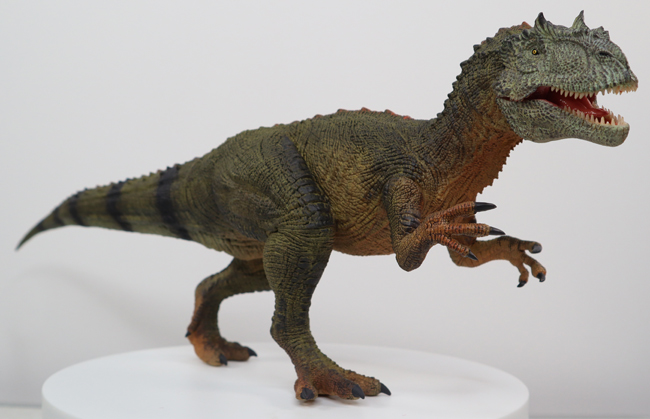Utah Palaeontologists Uncover the Bones of a Large Meat-Eating Dinosaur
Meat-eating dinosaur fossils found in Utah.
The discovery of the articulated skeleton of a large meat-eating dinosaur has been announced by a team of scientists in Utah (western United States). The fossilised bones, including much of the backbone have been preserved in articulation, that is, joined together just as they would have been when this large, theropod dinosaur roamed the Late Jurassic of America.
Meat-eating Dinosaur
The find was made in November but the announcement was delayed until this week as plans were being finalised to begin further excavation work. The dig site is located east of the small town of Castle Dale in Emery County, Utah, the area is well-known for its Late Jurassic dinosaur discoveries.
A spokesperson for the College of Eastern Utah’s Prehistoric Museum, stated that at least 20 articulated vertebrae had been found. It is likely that the bones are from an Allosaurus (A. fragilis?), the best-known theropod from the Morrison Formation. Articulated cervical (neck) and dorsal (back) vertebrae are present, perhaps further excavation work will reveal skull material. The fossilised bones of as yet, an unnamed plant-eating dinosaur have also been found in close proximity.
Allosaurus is typical of a large theropod. Walking on its massive hind legs, its light skull was balanced on a “S-shaped” neck, this large carnivore has been nick-named “the lion of the Jurassic”. Allosaurus grew to around 12 metres long, making it one of the largest meat-eating dinosaurs of the Western United States.
A Drawing of Allosaurus
Picture credit: Everything Dinosaur
To view scale models of theropod dinosaurs, take a look at the extensive range of replicas and figures in the series: CollectA Deluxe Prehistoric Life Models.
The excavation was put on hold during the winter but will resume in earnest next month, with public viewing scheduled from May 4th until May 8th. For many years, Allosaurus was thought to be the largest meat-eating dinosaur from the prolific Cleveland-Lloyd quarry and its surrounding areas. However, a few fragmentary bones of another larger animal were excavated in the 1930s but not properly studied until sixty years later. American palaeontologist Don Chure and his colleagues found the bones to be very similar to those of an Allosaurus but there were subtle differences in the caudal vertebrae (tail bones) and the shape of the neck bones (cervical vertebrae).
The team concluded that they had discovered a new genus of large theropod and named the creature Saurophaganax, Saurophaganax maximus (the name means “the greatest reptile eater”). Estimates of the size of this animal, put it around one metre longer than the largest specimen of Allosaurus discovered to date. However, there is debate as to whether this does represent a new genus, or just a particularly large example of an Allosaurus.
A 1:35 Scale Replica of Saurophaganax

The Rebor Saurophaganax maximus 1:35 scale dinosaur model in the “Notorious Big” series. This is the “jungle” colour variant. Picture credit: Everything Dinosaur.
Picture credit: Everything Dinosaur
The model shown above is a Rebor 1:35 Saurophaganax replica in the “jungle” colour scheme.
To see the range of Rebor prehistoric animal figures in stock at Everything Dinosaur: Rebor Prehistoric Animal Replicas and Models.







Leave A Comment